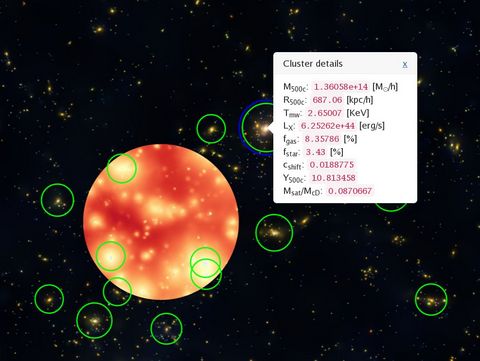
Scientists Observe Clumpy High-Velocity Winds Emanating from Supermassive Black Hole, Transforming Galaxy Formation Insights
In a significant astronomical breakthrough, researchers utilizing Japan’s recently launched XRISM (X-ray Imaging and Spectroscopy Mission) space telescope have achieved a remarkable discovery: dense, turbulent gas clumps racing away from a supermassive black hole at speeds nearing one-third the speed of light. Featured in the journal Nature, the research demonstrates that these incredibly swift winds are vastly more intricate and chaotic than previously recognized, fundamentally altering researchers’ perceptions of black holes and their contributions to galaxy development.
Exploring Quasar PDS 456
The black hole in question is located at the heart of quasar PDS 456, a hyper-luminous galactic core situated approximately 2.7 billion light-years away. This quasar harbors a supermassive black hole with a mass almost 500 million times greater than our Sun. Employing XRISM’s advanced X-ray spectroscopy capabilities, scientists identified five distinct outflowing gas components soaring away at speeds ranging from 22% to 33% of light speed—far more detailed than the broad, indistinct characteristics noted by earlier X-ray observatories.
The Discovery: Millions of Outflowing Clusters
Longstanding models had presumed that black holes generate smooth, continuous streams of energy and matter. However, XRISM’s Resolve instrument, functioning with about 30 times the spectral resolution of previous X-ray telescopes, uncovered an astounding finding: the powerful winds comprise up to one million separate gas clumps, each varying from 2 to 16 times the gravitational radius of the black hole. These clumps produce a phenomenon likened to a cosmic “buckshot” effect—a barrage of dispersed gas expelled in bursts rather than a steady flow.
In the past, the outflows were observed as singular, homogenized absorption features in data from instruments like XMM-Newton and NuSTAR. Now, with XRISM’s capability to differentiate energy signals differing by merely 6 electron volts, researchers can identify individual components within the outflow, a technological advancement that has ushered in a new era in high-energy astrophysics.
A Galactic Exhale Transforming Feedback Models
These findings carry significant implications for understanding “feedback” — the process by which black holes affect their surrounding galaxies. Feedback has long been suspected to be critical in shaping galaxies due to a noted correlation between the mass of supermassive black holes and the mass of their host galaxy’s central bulge. However, the precise mechanism of how black holes regulate galactic-scale phenomena has remained unclear.
The latest data indicates:
– A staggering loss of mass driven by winds, ranging from 60 to 300 solar masses annually.
– Kinetic energy outputs that exceed the black hole’s Eddington luminosity—the theoretical threshold where radiation pressure balances gravitational force.
– Momentum transfer rates that surpass galaxy-scale outflows by a factor of ten.
– Total wind energetics amounting to 1,000 times greater than any previously established galaxy-wide feedback mechanism.
This suggests that the chaotic, clumpy winds might play a far more crucial role in redistributing energy and matter within galaxies than previously anticipated.
Intermittency and Inefficiency: A New Evolutionary Perspective
Despite the immense energy involved, not all of it may extend to galactic scales. The researchers propose two potential explanations for this inconsistency:
1. These explosive, clumpy winds may be transient, episodic events occurring in less than 10% of a typical quasar’s lifetime.
2. The irregular arrangement of both the wind and the surrounding interstellar medium could hinder effective energy transfer from small (black hole) to large (galaxy) scales.
These revelations are essential for refining how simulations of galaxy formation and black hole growth are crafted in cosmology. They imply that authentic feedback mechanisms may be significantly more chaotic and less efficient over galactic distances than previously believed.
Technical Achievement: XRISM Expands the Horizons of X-ray Astronomy
The success of this research marks a monumental milestone for the XRISM mission and Japan’s space agency JAXA, in partnership with NASA and ESA. The telescope’s primary instrument, the Resolve, incorporates an advanced X-ray calorimeter that can detect subtle energy variations with outstanding precision. Its design permits researchers not only to resolve multiple velocity components in rapidly moving gas but also to identify intricate features such as P Cygni-like line profiles that encompass both absorption and emission characteristics.
This capability enabled scientists to monitor variability during a black hole flare observed in PDS 456, determining the relative position and extent of the X-ray emitting corona as well as the distance to the ejected gas clumps.
A Glimpse into the Early Universe
While PDS 456 is comparatively close in cosmic terms, its extreme properties make it a significant analog for quasars that populated the early universe—those that thrived during the peak of black hole and galaxy formation approximately 10–12 billion years ago.